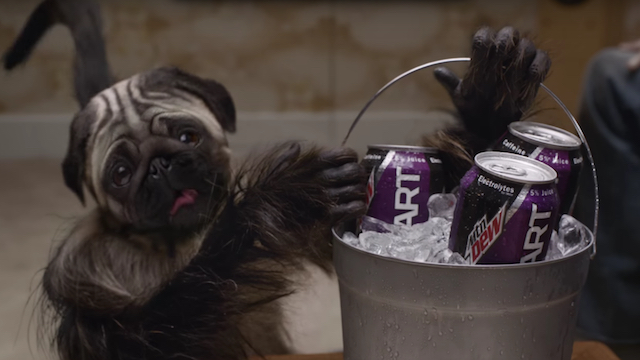14 February 2016 | Articles, Articles 2016, Marketing | By Christophe Lachnitt
On The Social Web, Nobody Knows A TV Commercial Is An Ad
The cost to run a 30-second commercial during this year’s Super Bowl was 5 million dollars.
The same investment would have allowed an advertiser to purchase a week’s worth of brand visibility on Snapchat, 1.6 billion impressions and 500 million video views on Facebook, 2.5 billion impressions on Instagram or 3 billion impressions on Twitter.
In comparison, CBS’s broadcast of Super Bowl 50 averaged 111.9 million TV viewers and drew 1.4 million streaming viewers. Moreover, the most viral commercial online, Mountain Dew’s ‘Puppy Monkey Baby’, “only” generated 402 million social impressions.
However, there is a noticeable difference between the respective impacts of TV commercials and social ads on the social web. In my view, it is the same difference as the one between advertising and journalistic content.

Mountain Dew’s ‘Puppy Monkey Baby’ – (CC) Mountain Dew
An advertisement doesn’t have the same impact as journalistic content. Indeed, consumers are aware that ads aren’t run because they are interesting in themselves but because brands paid for their placement.
The same logic applies to TV commercials and social ads on the social web: Social conversations about a TV commercial are a reflection of consumers’ interest in it whereas social ad impressions are paid for.
As a matter of fact, we all operate as journalists when we share a news or opinion on a social network. We act as journalists in the sense that we sort out, hierarchize and endorse the information we post online.
Therefore, whenever we share a TV commercial on social networks, we highlight its informative and/or entertaining value and transform it into editorial content. The messenger is the message.
This is one of the reasons why TV commercials still have great value for advertisers in the social age.


